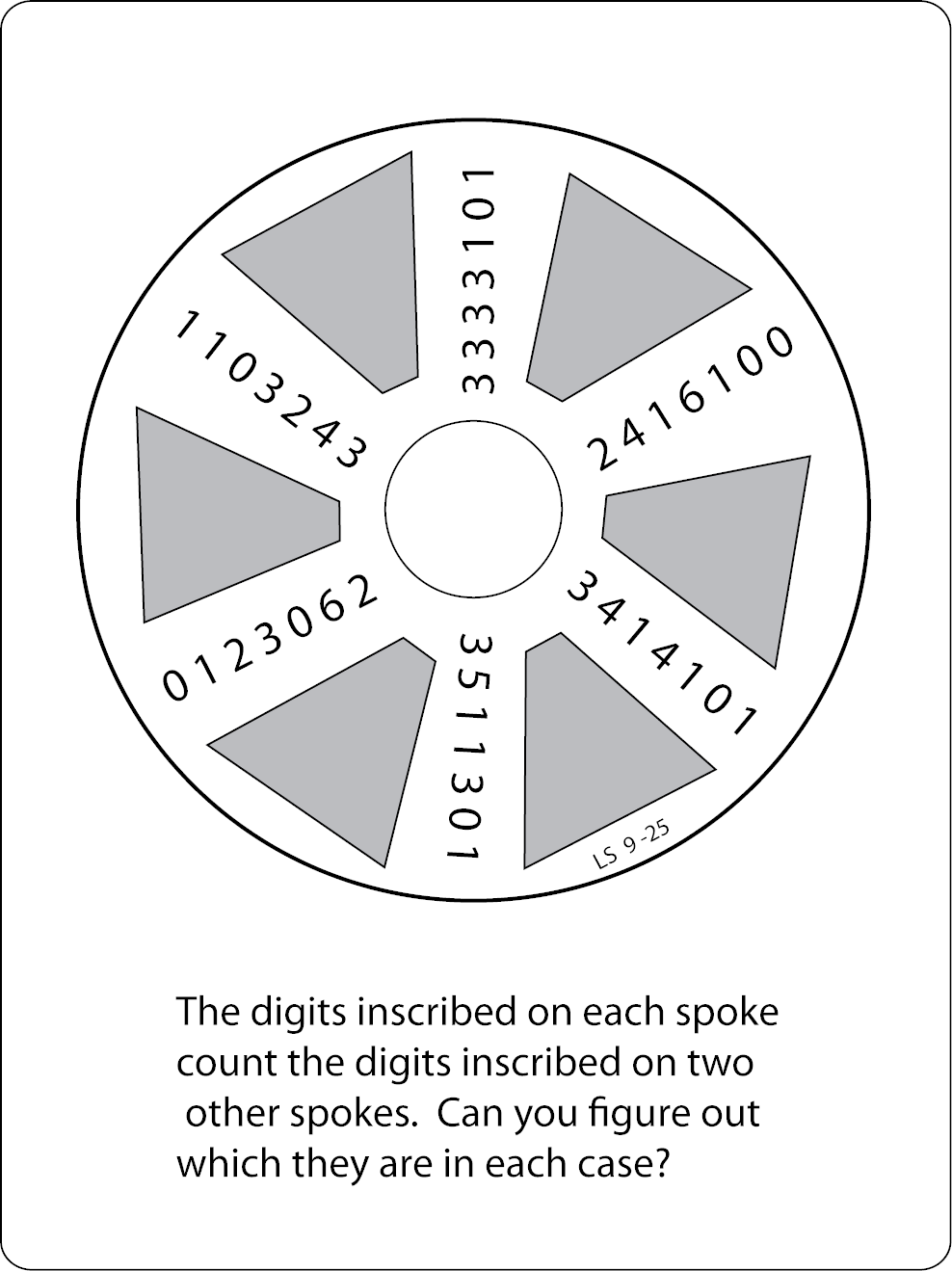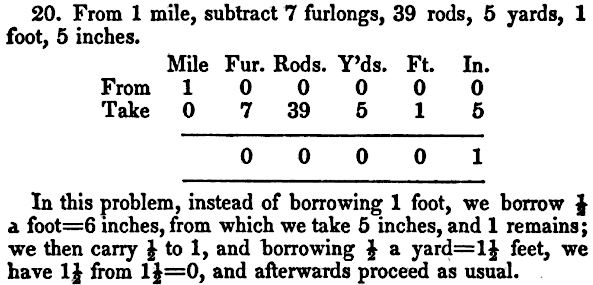Science & Math
Education
Number Theory
What’s the funniest number? Yale physicist Emily Pottebaum proposed the Perceived Specificity Hypothesis, which states that “for nonnegative integers < 100, the funniness of a number increases with its apparent precision." She surveyed 68 acquaintances and found that:
- Among integers divisible by 10, 0 is funniest.
- Odd numbers are consistently funnier than even.
- “Furthermore, the most oddly specific numbers — odd numbers with a degree of specificity of 2 — are the most funny, according to the data presented here.”
The degree of specificity characterizes the distance between an integer and the nearest multiple of 5:
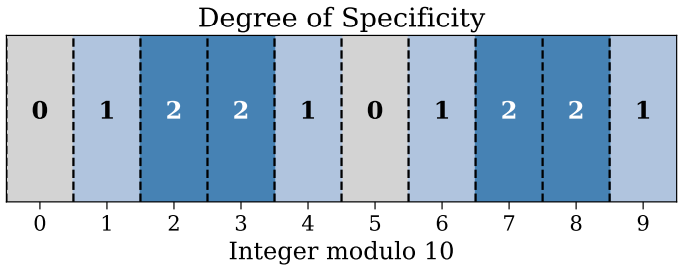
So 3, 7, 13, 17, etc. were judged to be funniest.
“I acknowledge my Ph.D. advisor, who I shall not name out of respect for her academic integrity, for her exasperation upon learning about this study. I thank her for putting up with my antics and plead that she continue to do so until I graduate.”
(E.G. Pottebaum, “What Is the Funniest Number? An Investigation of Numerical Humor,” arXiv preprint, arXiv:2503.24175 [2025].)
Piecework
In the Spring 1957 issue of Pi Mu Epsilon Journal, C.W. Trigg points out that, by two continuous cuts, the surface of a cube can be divided into two pieces that can be unfolded and assembled into a hollow square:
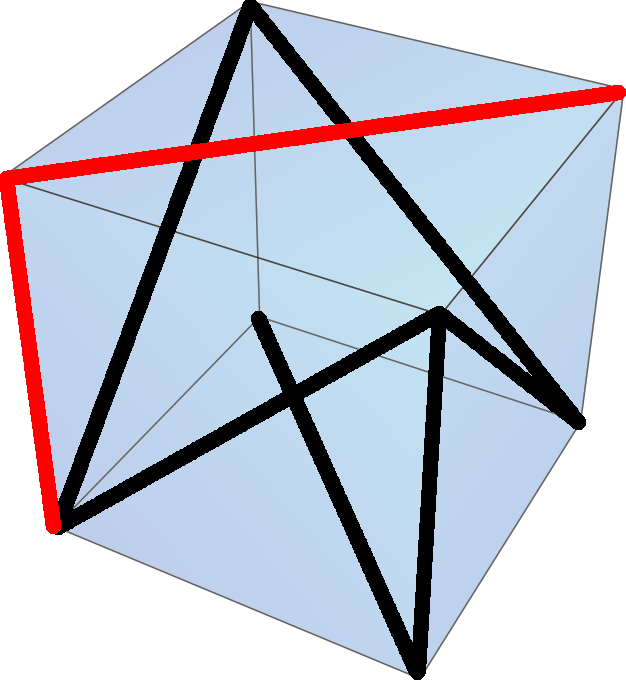
The cuts divide the cube’s surface into two congruent pieces, each composed of six connected isosceles right triangles. Joining these two pieces forms a hollow square with exterior side and interior side
, where x is the length of the cube’s edge.
10/10/2025 UPDATE: Reader Nick Hare made a much, much, much, much better diagram:
(Thanks, Nick.)
Betrothed Numbers
Two numbers are said to be betrothed if the sum of the proper divisors of each number is 1 more than the value of the other. For example:
The proper divisors of 48 are 1, 2, 3, 4, 6, 8, 12, 16, and 24. 1 + 2 + 3 + 4 + 6 + 8 + 12 + 16 + 24 = 76 = 75 + 1.
The proper divisors of 75 are 1, 3, 5, 15, and 25. 1 + 3 + 5 + 15 + 25 = 49 = 48 + 1.
Interestingly, in all such pairs discovered so far, one number is odd and the other even. Is this always the case? That’s an open question.
A 3×3 Panmagic Square
From Lee Sallows:
Numerical panmagic squares of 3×3 being impossible, the above square is in fact the first known order-3 panmagic square, a boast it can enjoy until the day that someone comes up with an improved solution. Such as one using all nine connected pieces, say.
Or not, perhaps? For the square above has a further property that other panmagic squares may not possess. Choose any three of the four corner pieces. There are four possibilities: aci, cig, agi and acg. Whatever your choice, the three pieces selected will tile the target.
(Thanks, Lee!)
The Epolenep Principle
A volunteer deals cards from an ordinary deck into two piles, stopping whenever he likes. He tosses aside one of the piles and peeks at the top card of the other pile. Then he drops the remainder of the cards on top of this pile and deals everything again into two piles. The magician, who has never touched the cards, now divines which of the two piles contains the memorized card and indeed discovers the card itself.
This trick is based on the Penelope principle, a mathematical idea worked out by Scottish magician and computer programmer Alex Elmsley. Elmsley’s technique required a perfect faro shuffle, so David Rutter revised it into a simpler version that’s entirely self-working. It was presented at the 15th Gathering for Gardner conference last year.
(Thanks, Joe.)
Early Observer
In 1831, in the appendix to a book on the raising of trees for shipbuilding, Scottish grain merchant Patrick Matthew suggested that, over great expanses of time, “the progeny of the same parents, under great difference of circumstance, might, in several generations, even become distinct species, incapable of co-reproduction.” He’d struck on the central idea of natural selection nearly 30 years before On the Origin of Species:
As the field of existence is limited and pre-occupied, it is only the hardier, more robust, better suited to circumstance individuals, who are able to struggle forward to maturity, these inhabiting only the situations to which they have superior adaptation and greater power of occupancy than any other kind; the weaker, less circumstance-suited, being prematurely destroyed.
On learning of this, Darwin allowed that Matthew “briefly but completely anticipates the theory of Nat. Selection.” In a letter to the Gardeners’ Chronicle, in which Matthew had pointed out his early observation, Darwin wrote, “I freely acknowledge that Mr. Matthew has anticipated by many years the explanation which I have offered of the origin of species, under the name of natural selection.”
But modern observers point out that Matthew didn’t pursue the idea and may not have realized the breadth of its import. Historian of science Peter Bowler writes, “Simple priority is not enough to earn a thinker a place in the history of science: one has to develop the idea and convince others of its value to make a real contribution.” Darwin called Matthew’s note “a complete but not developed anticipation … Anyhow one may be excused in not having discovered the fact in a work on Naval Timber.”
Impedance Matching
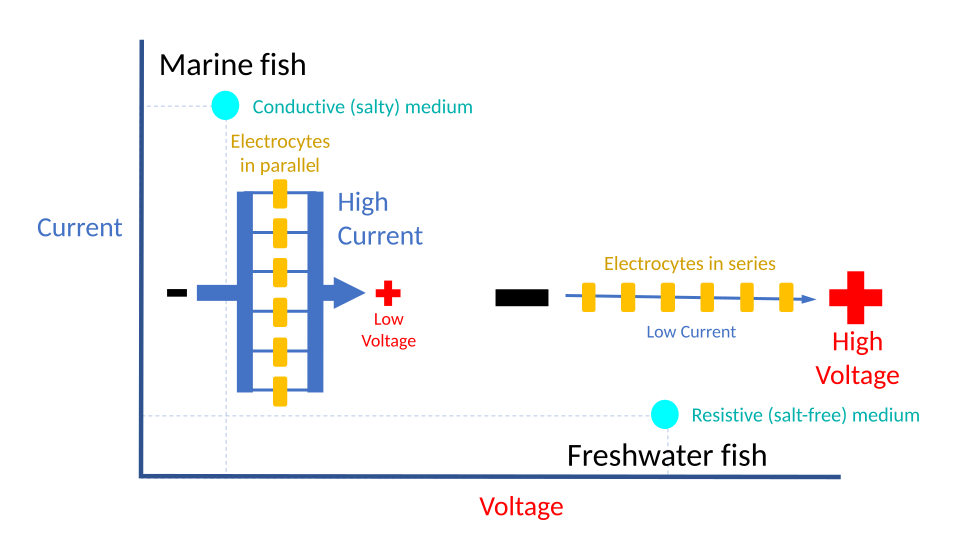
Among electric fish, those that live in freshwater have their generating cells arranged “in series”; in saltwater they appear “in parallel.”
Seawater conducts better than fresh water, so freshwater fish need to generate a high voltage to overcome the resistance of their medium. Their electricity-producing cells are arranged in series.
Marine fish operate at higher currents but lower voltages, so their electrocytes appear in parallel.
Product Placement
William Stokes’ Pictorial Multiplication Table of 1866 promised to teach multiplication facts to a child of average ability in less than half an hour. It did this by representing each digit with an object:
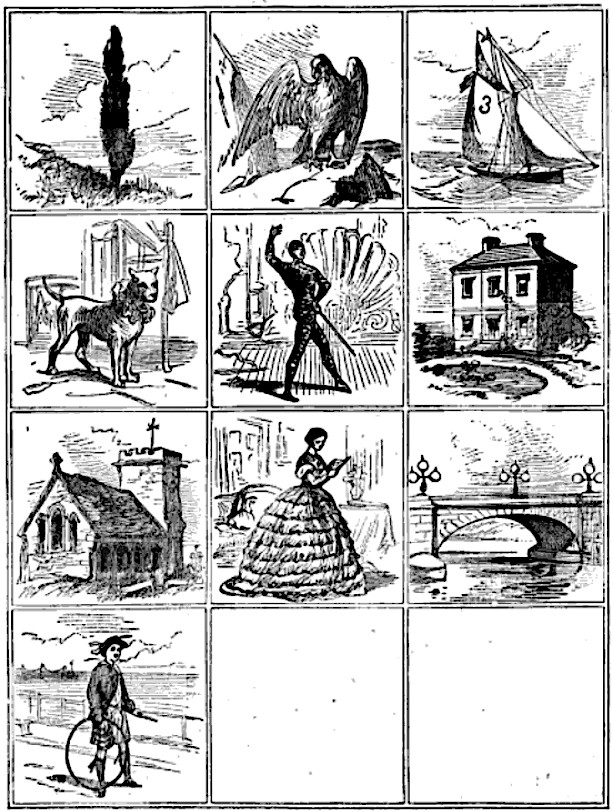
A TREE means 1, from one trunk springs.
A BIRD means 2, it has two wings.
A BOAT is 3, three sails are shown.
ANIMALS 4, four legs they own.
A MAN means 5, five fingers he.
A HOUSE means 6, six windows see.
A CHURCH means 7, not windows less.
A LADY 8, see eight-flounced dress.
A BRIDGE is 9, nine lamps are found.
A BOY means 0, see hoop so round.
Now each fact can be represented by a picture. Here’s the “twice” table:
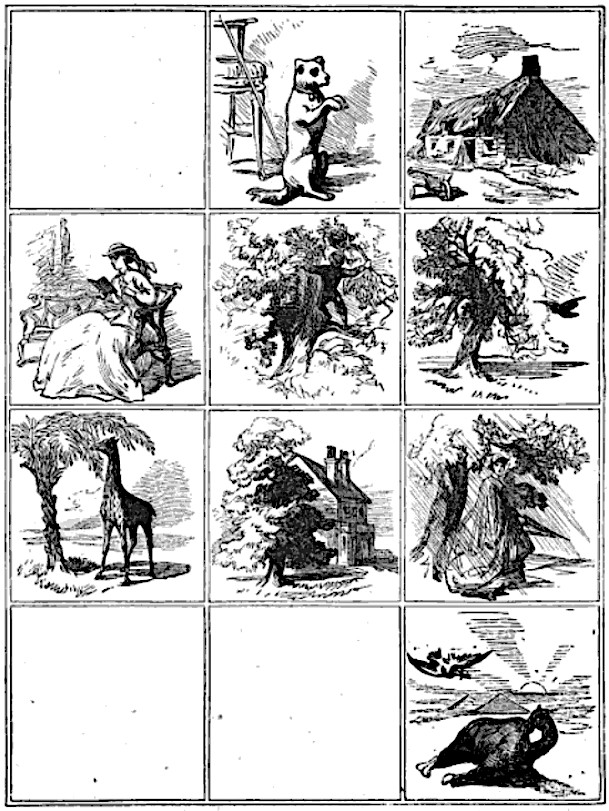
These are the products of 2 with the first 12 integers, in order. The second box, representing 2 × 2, depicts a dog, which is an ANIMAL with 4 legs, so 2 × 2 is 4. The sixth box, representing 2 × 6, depicts a TREE and a BIRD, so 2 × 6 = 12. And so on. The first box, which covers the fact that 2 × 1 = 2, is omitted because we’ve already mastered the fact that 1 × 2 = 2 (in the “once” table). The 10th and 11th boxes are blank because multiplication by 10 and 11 are considered so easy that no mnemonic is needed.
How can we remember the “twice” table itself? Stokes provides a verbal rhyme that sums it up:
Twice — Dog, Cot, Reader, Nest, and Bird flying;
Giraffe, Inn, Shower, and Camel dying.
In this way a student can master every fact up to 12 × 12 by memorizing 59 simple pictures (and 12 rhymes). How well this worked, and whether the images could be carried accurately in one’s head through a lifetime, is less clear.

